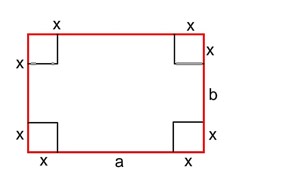Application of Derivatives
Get insights from 282 questions on Application of Derivatives, answered by students, alumni, and experts. You may also ask and answer any question you like about Application of Derivatives
Follow Ask QuestionQuestions
Discussions
Active Users
Followers
New answer posted
3 months agoContributor-Level 10
-6a + 2b = 0
=> b = 3a
-5 + d = -10 . (i)
f (-1) = 6
11a + d = 6 . (ii)
New answer posted
3 months agoContributor-Level 10
f (0) = 0, f (1) = 1, f (2) = 2
h (x) = f (x) – x has three roots
, has at least two roots
has at least one root.
New answer posted
3 months agoLet f be a non-negative function in [0, 1] and twice differentiable in (0, 1). If and f(0) = 0, then
Contributor-Level 9
Applying Leibniz theorem,
on integrating both sides, we get
put x = 0 and f (0) = 0 we get C = 0
by L' Hospital rule
New answer posted
3 months agoContributor-Level 10
Breadth = b – 2x
& height = x
Let volume V =
For minimum volume
Since x =

New answer posted
3 months agoContributor-Level 10
Let square is made with piece of length x metre & hexagon with piece of length y metre
x + y = 20 .(i)
Now let A = area of square + area of hexagon
,
for minimum area
=> side of hexagon =
New answer posted
3 months agoContributor-Level 10
Side of square = a
Radius of circle = r
Given : 4a + 2pr = 36
S = a2 + pr2
Taking an Exam? Selecting a College?
Get authentic answers from experts, students and alumni that you won't find anywhere else
Sign Up on ShikshaOn Shiksha, get access to
- 65k Colleges
- 1.2k Exams
- 679k Reviews
- 1800k Answers
